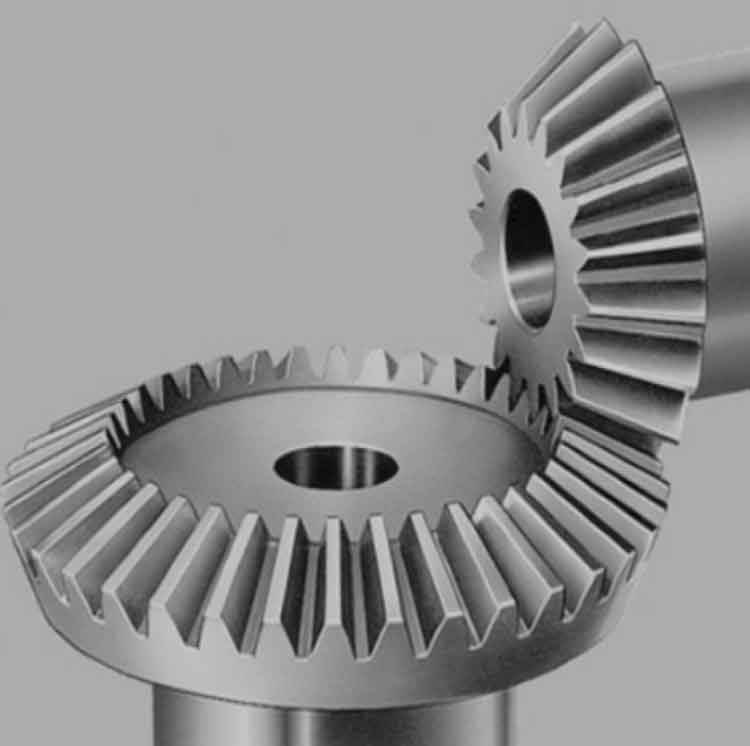
Straight bevel gears are a type of bevel gear that have straight teeth that are cut along the surface of a cone. They are widely used in various mechanical systems to transmit motion and power between intersecting shafts. Here’s a closer look at their design, function, and applications:
Design:
Straight bevel gears consist of two gear elements with intersecting shafts, where the teeth are cut on the outer surface of each gear. The teeth are straight and tapered in shape, allowing for smooth engagement and transfer of power. The angle between the shafts determines the speed ratio and direction of rotation between the two shafts.
Function:
The primary function of straight bevel gears is to transmit rotational motion and torque between non-parallel intersecting shafts. When the gears mesh, the teeth interlock and transfer power from the driving gear to the driven gear. The contact between the teeth is along a straight line, resulting in a sliding motion during engagement. This sliding action generates axial thrust, which needs to be properly managed in the design and operation of the gear system.
Applications:
Straight bevel gears find applications in a wide range of industries and machinery, including:
- Automotive Industry: Straight bevel gears are commonly used in automotive differentials to transfer torque between the driveshaft and the wheels. They are also used in rear-wheel drive systems, power take-off units, and other drivetrain components.
- Industrial Machinery: Straight bevel gears are employed in various industrial machinery, such as machine tools, printing presses, conveyors, and packaging equipment. They are used to transmit power and motion between intersecting shafts in these applications.
- Marine Applications: Straight bevel gears are utilized in marine propulsion systems, such as marine engines, outboard motors, and ship propulsion systems. They enable the transfer of power from the engine to the propeller shaft, providing thrust for propulsion.
- Mining and Construction Equipment: Straight bevel gears are found in heavy machinery used in mining and construction, including excavators, bulldozers, and loaders. They are used to transmit power between the engine and various drivetrain components.
- Aerospace Industry: Straight bevel gears are employed in aircraft systems, such as landing gear mechanisms, flight control systems, and engine components. They help transmit power and motion in critical aircraft systems.
- Power Generation: Straight bevel gears are used in power generation equipment, such as turbines and generators. They help transmit power between the turbine shaft and generator shaft, enabling the conversion of mechanical energy into electrical energy.
The design and selection of straight bevel gears depend on factors such as load capacity, speed requirements, noise considerations, and efficiency. Proper lubrication, maintenance, and gear alignment are essential to ensure smooth operation and maximize gear life.
Overall, straight bevel gears offer a reliable and efficient means of transmitting motion and power between intersecting shafts in various applications, contributing to the smooth operation of numerous mechanical systems.
